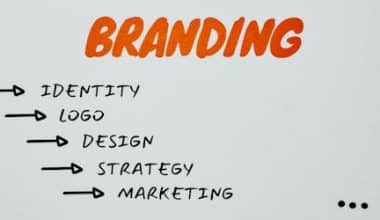The concept of putting your life, accomplishments, and soul into a coherent narrative can be intimidating. I recall the first time I sat down to write my biography; it seemed like an impossible assignment. But with careful reflection, organization, and a dash of storytelling, I turned my experiences into a captivating narrative. In this article, I’ll walk you through the process of how to write a biography about yourself, providing tips and methods that go beyond the basics.
What is a Personal Biography?
A personal bio is a brief introduction that highlights your experience, credentials, education, and personal or professional accomplishments. It can assist you in communicating your personal brand and demonstrate what distinguishes you. A personal bio can be used as a marketing strategy when applying for jobs, recruiting new clients, or persuading others to follow you on social media. A personal bio can comprise the following components:
- Objectives & Goals: A personal bio typically reflects the objective or goal for creating it, such as addressing clients or finding a new job.
- Successes: In your bio, you can include information about your personal or professional successes, such as awards or favorable feedback from clients.
- History: You can share your personal or professional background in your bio, such as your present job, years of industry experience, or reasons for pursuing your career path.
- Education and qualifications: A personal bio frequently mentions your educational history and other credentials, such as internships, certificates, or professional development training.
Why Write a Biography on Yourself?
Writing a biography about yourself is not limited to authors or popular personalities. It’s an effective instrument for personal and professional development. Here are some reasons to consider writing your own biography:
- Self-Reflection: It allows you to reflect on your life experiences, accomplishments, and lessons learned.
- Personal Branding: A well-written biography can help boost your professional image and personal brand.
- Legacy: It establishes a written legacy for your family and future generations.
- Networking: It’s an excellent networking tool, providing others with a concise and entertaining description of who you are.
A Step-by-Step Guide on How To Write a Biography About Yourself
Step #1: Gathering Your Information
Begin by compiling all pertinent details about your life. This contains your birth date, school level, work experience, notable accomplishments, and any other noteworthy life events.
Example: When I started writing my biography, I gathered old notebooks, diplomas, work documents, and images to refresh my memory and ensure correctness.
Step #2: Identify Your Theme
Determine the fundamental idea or message you intend to convey. This could be your professional development, personal growth, overcoming obstacles, or contributions to a specific field.
Research published in Psychology Today found that people are more likely to recall and be persuaded by stories with clear themes and messages.
Step #3: Make an Outline
Outline the main sections of your biography. This usually contains an introduction, early life, education, profession, personal life, and accomplishments. An outline helps you organize your ideas and provides a logical flow.
Example: My outline contained sections such as “Early Inspirations,” “Academic Pursuits,” “Professional Milestones,” and “Personal Reflections.”
Step #4: Write the Introduction.
Your introduction should pique the reader’s interest and provide an overview of who you are. Mention crucial points and establish the tone for the remainder of the biography.
Example: “From a young age, I knew I wanted to make a difference in the world. My journey from a small-town dreamer to a successful entrepreneur is a testament to the power of perseverance and passion.”
Step #5: Describe Your Early Life
Share information about your upbringing, family history, and early influences. This section establishes the framework for analyzing your motives and goals.
Example: “Growing up in a close-knit family, my parents instilled in me the values of hard work and compassion. These principles guided me through my formative years.”
Step #6: Highlight Your Education
Discuss your educational background, including institutions attended, degrees received, and any notable academic accomplishments. This adds context to your career journey.
Example: “My passion for technology led me to pursue a degree in Computer Science at XYZ University, where I graduated with honors.”
Step #7: Document Your Career
Describe your career path, including employment, important projects, and professional successes. Highlight the major moments that shaped your career.
Example: “Starting as a junior developer, I quickly rose through the ranks to become a project manager, leading teams to develop innovative software solutions.”
Step #8: Share Personal Stories
To give your biography more depth and personality, including personal tales and stories. These stories make your biography more relatable and intriguing.
Example: “One of the most challenging times in my life was when I decided to start my own business. With no guarantee of success, I poured my heart and soul into my startup, learning valuable lessons along the way.”
Step #9: Discuss Achievements and Contributions
Highlight your most significant achievements, accolades, and contributions to your sector or community. This establishes your credibility and demonstrates your influence.
Example: “Over the years, I’ve received several industry awards, including the Innovator of the Year Award, for my contributions to advancing technology.”
Step #10: Wrap Up with Reflections and Future Goals
Finish your biography with observations on your path and goals for the future. This gives the reader a sense of your continued progress and ambition.
Example: “Looking back, I am grateful for the challenges and triumphs that have shaped me. Moving forward, I am excited to continue pushing the boundaries of innovation and making a positive impact.”
Best Places to Display Your Personal Bio
You’ve probably understood how vital it is to have a personal bio. But what you may not realize is that where you position your bio is just as crucial as what you say in it. Your bio should be front and center, where visitors can readily view it.
The most popular places to exhibit it are on online platforms such as Facebook, Twitter, Instagram, LinkedIn, personal websites, and guest posting profiles. Here is a full description of the major platforms:
#1. Twitter:
First impressions count, especially on social media. And if you want to make a solid first impression on potential clients or followers, start with your Twitter profile. It’s the first thing people notice when they visit your profile. And, with only 160 characters to work with, a well-written bio might mean the difference between someone clicking the “follow” button and going on to the next profile. You can also utilize it to emphasize your main traits.
#2. Instagram
Instagram allows you to not only market your business or brand but also communicate with potential customers and build your Instagram following. Keeping the Instagram character restriction at 150 may be difficult, but it may also be a valuable lesson in determining the most relevant information. Use Instagram’s character restriction wisely.
#3. LinkedIn
LinkedIn’s summary is an excellent feature for presenting yourself to the world or providing potential employers a sense of your personality. It’s also an excellent place to advertise your business because it allows you to reach out to new customers, reconnect with old ones, and promote your company. Your LinkedIn profile allows you to define yourself in up to 2,000 characters; this is the best place to provide your master bio. To write an excellent LinkedIn bio, look at some examples.
#4. A Personal Website
A personal website is a public-facing online resource that enables you to engage with and attract your intended audience. You can utilize your website to keep your audience informed about the newest advances in your company and/or services.
Other options include posting your personal bio on Facebook, guest posts, speaker profiles, and so on.
Tips & Tricks for Writing Your Own Biography
It is critical to write a biography that truly reflects your achievements, abilities, and personality. This will help potential employers see you in a more positive light, increasing your chances of being employed. Here are some tips for writing a biography about yourself:
- Keep it brief and simple: Most people only have a few seconds to capture a potential employer’s attention, so make your bio concise and to the point.
- Follow the character restriction: Each platform has a character limit for you to write your bio, which should be genuine and well-written.
- Be honest: Don’t exaggerate your previous work experience or skills, and don’t lie about anything that could come back to haunt you later on.
- Make it interesting: There is no need to describe every aspect of your life, but adding some humor and passion will make it far more engaging for readers and set you apart from the throng.
- Give a full image: Include information about your personal interests outside of work, as well as your values and passions in your picture. This information may help them assess whether you’re a suitable fit for the role or whether you have the attributes they seek.
- Update your personal bio regularly to reflect any changes in your employment or personal life. By routinely updating your bio, you show that you care about what is going on in your life and are prepared for whatever comes next.
What Should I Include in My Personal Bio?
Isn’t it time to delve deeper and learn more about how to write an attention-grabbing bio?
When we talk about an excellent personal bio, we envision an exceptional writeup that can easily set one apart from the crowd. It is critical to write a sensible bio for each online platform because character restrictions and target audience intent change.
Here’s how to write a bio about yourself for several web platforms:
How do I write a nice Twitter bio?
Twitter is a platform for people to connect and share ideas, therefore it’s important to include information about yourself and your values in your profile.
If you are an author or blogger, please send your most recent book or blog article. If you’re a chef or a foodie, specify your preferred cuisine. Also, if you’re a fitness fan, share your favorite class or gym.
Whatever you do, do not strive to be someone else; simply be yourself. Here is what you can include:
- Only concise works – As previously stated, you only have 160 characters to work with. That isn’t a lot of space, so you’ll need to be careful with your wording.
- Keywords – When individuals search for someone or something on Twitter, they often utilize keywords. So putting relevant keywords in your bio can help you appear in more searches.
- Be precise – Don’t just state “writer”; mention “freelance writer specializing in SEO copywriting.” For whom do you work? Provide a brief overview of your products, services, or activities.
- Emojis and hashtags – Use hashtags to categorize your content and increase its discoverability. Emojis are also a fun addition to your bio, so don’t be hesitant to use them.
- Include a call to action – Encourage them to do something specific, such as visit your website or follow you on another social media.
Follow these strategies to create an excellent Twitter bio that will attract potential followers.
How to Write an Effective Instagram Bio
In today’s age of rapid scrolling and split-second judgments, you must ensure that your Instagram profile tells your brand’s story and entices people to follow you.
That’s where an excellent Instagram bio comes in. A strong personal brand on Instagram relies heavily on a good bio. And, while it may appear to be a minor effort, writing an effective bio can have a significant impact.
Here’s what you should keep in mind when creating a powerful personal bio for Instagram:
- Optimize your Instagram profile – Use keywords to make your profile more visible in random searches.
- Use the URL section: Include a link to your website or blog in your bio to increase traffic and exposure for your business.
- Use emojis: Emojis bring personality to your bio. Just don’t overdo it. A few strategically placed emojis can go a long way.
- Describe yourself: Mention your role and who you are. Add some details about your personal life as well.
- Be creative – Your Instagram bio is your finest opportunity to showcase your individuality. Be creative and have fun with it!
Creating an effective Instagram bio is not as straightforward as it appears. It necessitates strategic planning and innovation. Furthermore, your profile contains a wealth of high-quality information.
How can I write a nice LinkedIn bio?
Employers are increasingly using LinkedIn to locate applicants, so how can you make sure your LinkedIn profile is a good fit for the position you’re going for? The answer is as simple as your LinkedIn summary or bio.
The secret to writing an effective LinkedIn bio is to be yourself, but not too much. You want to be genuine, but you shouldn’t write about things you’ve never done or never wish to do. The most important thing is to demonstrate that you have a unique expertise that sets you apart.
Here’s what you should put in your LinkedIn personal bio.
- Highlight your professional accomplishments: Your LinkedIn summary is the ideal opportunity to brag. This is your moment to showcase your abilities and experience.
- Start with a bang: Include a hook that entices your readers to read on. An intriguing writing will give your readers a sense of your brand’s voice.
- Showcase your personality: Your LinkedIn profile is an extension of your personal brand, so ensure that your summary reflects that. This is your opportunity to shine and show folks what it’s like to work with you.
- Informative approach: Mention your present role and company, your city/location, specifics about your successes, and abilities and talents relevant to your sector and role.
- CTA: Although the links in the LinkedIn summary are not clickable, end with a basic CTA (such as your personal or company email).
A successful LinkedIn profile begins with a solid summary. Unfortunately, too many people focus on their work history and fail to sell themselves.
Some Personal Bio Examples
Personal Bio Examples for Twitter
- Mark Hamill’s Bio
Mark Hamill expresses his opinions and thoughts in a lighthearted and easygoing style. His Twitter profile is an excellent example of demonstrating your actual personality (transparency and honesty) while developing a strong personal brand.
- Jeff Rose’s Bio
Jeff Rose here is displaying some figures with an intriguing copy. Is it direct? Yes. Does it make the point clear? YES. On the personal side, he closes his Twitter bio with a Bible quote.
- Marie Forleo’ Bio
Ask Marie Forleo how to integrate relevant hashtags in your Twitter profile while keeping it professional and personal. Not to mention that she wrote all of this in a few words. Isn’t it impressive and smart? If you’re looking for short personal bio examples, take inspiration from this page.
- Hannah Morgan’s Twitter bio
Hannah Morgan understands how to exactly put those emoticons in a tight-knit Twitter profile. She included a one-liner summarizing her profession. Following that, she mentioned her excellent LinkedIn presence and ended with a personality feature (a hashtag, too!).
Personal bio examples for Instagram
- Rosie’s Instagram Bio
Rosie’s username and title complement her vibrant and striking Instagram profile. She employs a combination of emojis and smart content to explain her offering in a few words. With substantial social evidence (42 countries) and a link in the bio, her Instagram bio is an excellent model for anybody to follow.
- Jenna Kutcher’s Instagram Bio
Jenna Kutcher is the perfect example of how to write an Instagram bio that grabs people’s attention instantly! Look at how well she has color-coordinated her entire Instagram account. And the copywriting is simply amazing! She also included appropriate CTAs for each occasion, as well as a link in the bio.
- Trevor Noah’s Instagram Bio
Now, how about keeping things simple? However, as per your personal brand. Trevor Noah is a well-known comedian with a snarky delivery style. His Instagram bio demonstrates just that. It’s basic, to the point, and reflects his personality. So, if you want to keep it funny, take inspiration from this humorous personal bio example.
Personal bio examples for LinkedIn
- Jay Shetty’s LinkedIn biography
Jay Shetty’s LinkedIn title is brief and concise, but his LinkedIn summary says a lot. This is an excellent LinkedIn bio example for writing in the third person. He has presented his life’s journey and accomplishments in a timeline fashion.
- Richard van der Blom’s LinkedIn biography
Richard’s LinkedIn title and synopsis speak for themselves. Aside from having a distinctive LinkedIn banner, his LinkedIn summary area never fails to capture attention. The copy is excellent, and the information he provided is sufficient to grasp what he does. 11 out of 10!
- Damilare Odueso’s LinkedIn biography
Damilare’s LinkedIn summary is an excellent example of how to write a personal bio that tells a story. The way he begins narrating about his life’s failures and then takes you through his life journey in a conversational tone keeps the reader interested until the conclusion. So, if you want to build anything similar, take some pointers from his summary.
- Fernando Parada’s LinkedIn biography
When you look at Fernando Parada’s LinkedIn profile, the first thing that comes to mind is, “How is this profile so simple but so effective?”” His LinkedIn personal bio is written in a compassionate tone that speaks to his target audience nicely. The fact that he ends on a personal note is the best of the whole summary section.
Personal Bio Examples for Websites
- Ann Handley’s website personal bio
What do you think a writer’s personal bio should look like? Is it just perfect? Take a look at Ann Handley’s website personal bio. It’s brief, straightforward, and has several testimonies. This personal bio is an excellent example of how to keep things simple (while writing in the third person!).
- Mark Levy’s
Now here’s something new and different. Mark Levy’s website is essentially an online biography. Just one page that has information about him in two separate formats! That’s correct. The first section of his biography (Mark Levy’s Biography #1) provides formal information about his career and occupation. The second portion (Mark Levy’s Biography #2) is more enjoyable.
- Corry Frazier
Corry Frazier is a professional photographer and business professor. Her website’s about part is written in a compassionate tone, so her personal bio would resonate with any lady going through a similar experience. When you scroll up, you will see her life story, followed by her photography company, and everything concludes elegantly with mesmerizing photos.
- Amber’s website
Doesn’t Amber’s website exude lovely wedding vibes? Aside from the stunning website style (color themes), her personal bio is also in keeping with the concept. The copy is conversational, easygoing, and concise. When you scroll up, you will find some large figures as well as a wonderfully written profile about her business. This website bio is a wonderful illustration of how to keep it informal for your target audience.
Personal bio examples for resumes
This dummy CV demonstrates how to write a short resume bio that highlights your significant accomplishments. Your resume’s summary should highlight your most noteworthy achievements, and if you have any to brag about, include them here!
If you are a newcomer or a recent graduate with little to no experience, here is how you should write your personal bio on your resume. The example below depicts a marketing novice who aspires to become a social media professional. When you don’t have any experience to show, look for the closest similar achievements. This is also one of the top personal bio examples for students.
Talking about vocations other than corporate, here is an example of a resume bio for a babysitter. This one stands out due to its tone of voice, writing style, and lack of facts and data. This is a common personal bio example for writing based on your job type.
How can a customer service representative write an impressive biography? First, you’ll need some good numbers. Check out this personal bio of a customer support professional. He has effectively combined his experience with his technical skills—something that many employers look for first. If you’re looking for some basic personal bio examples, this is it.
Template for Writing a Biography
Want to create an impactful personal bio that highlights your unique journey and achievements? Download our comprehensive Personal Bio Template now and start crafting your story today!
Personal Bio Template
Key Takeaways
- Writing your biography allows you to reflect on your life experiences and accomplishments.
- A well-written biography can improve your professional image and personal brand.
- Use storytelling tactics to keep your biography interesting and relatable.
- Make sure your writing is clear, focused, and free of irrelevant details.
- Regularly update and revise your biography to reflect your continuous development.
Conclusion
Writing a biography about yourself is an excellent exercise in self-reflection and personal branding. By following this step-by-step process, you can craft an engaging and authentic story about your path and accomplishments. Have you written your biography yet? What were your challenges, and how did you overcome them? Please share your ideas and experiences in the comments below.
Related Articles
- Personal Brand Statement Mistakes: I Reviewed 1000 Profiles, and 90% Get This Wrong
- 10 Secrets to Crafting a Personal Vision Statement That Actually Works
- How to Write a Persuasive Proposal: 7 Best Tips
- How To Find Your Mugshot (And Remove It): A Legal Expert’s Step-by-Step Guide
- Personal Brand Traits: Your Key to Trust, Excellence, and Effective Leadership






